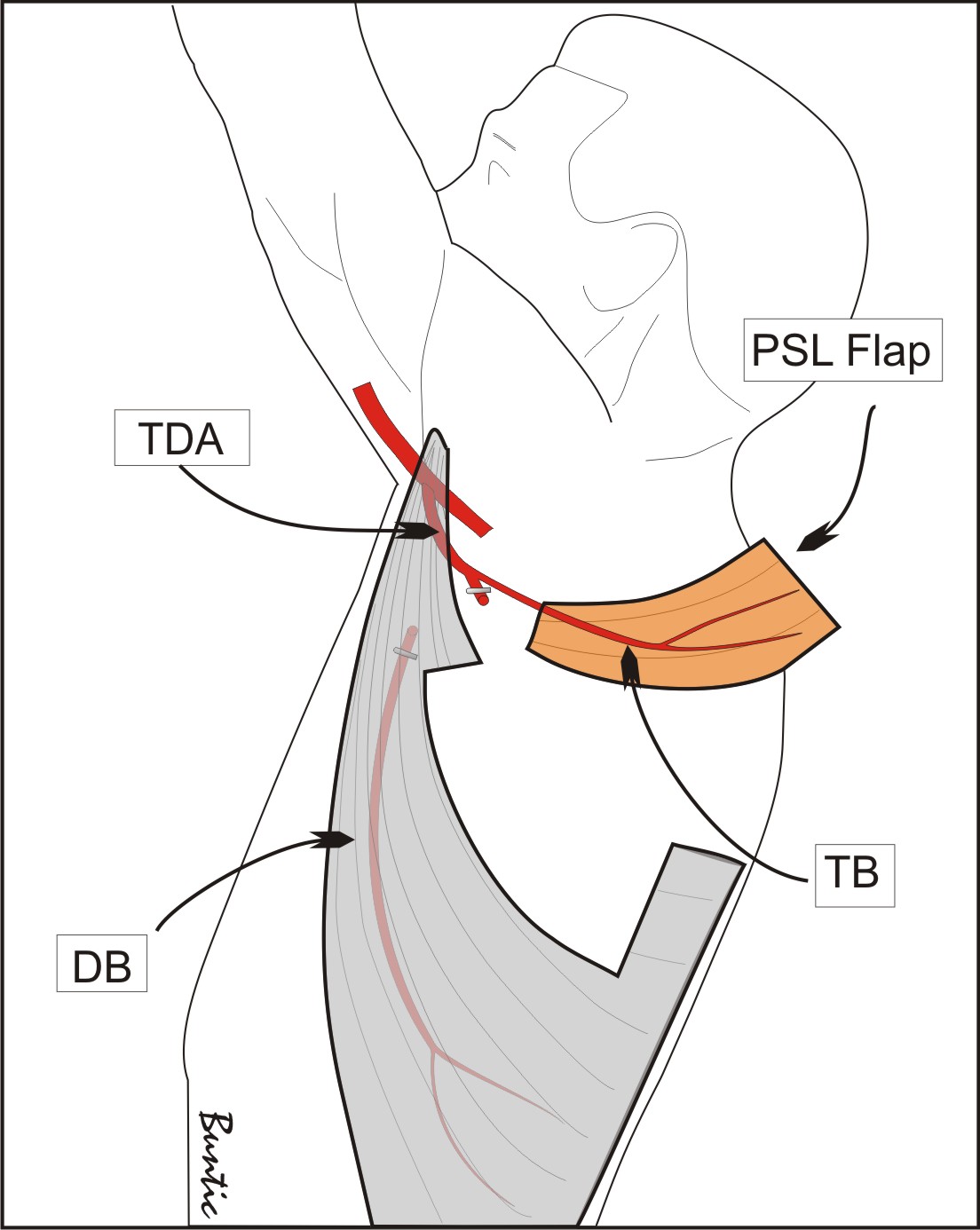Sunday, October 8, 2006 - 1:23 PM
10781
The Free Partial Superior Latissimus (PSL) Muscle Flap: Preservation of Donor Site Form and Function
PURPOSE: The latissimus dorsi muscle is a widely applied, reliable and versatile flap for pedicled and microvascular reconstruction. Harvest of the entire muscle results in sacrifice of form, the lateral thoracic silhouette, creates a large donor space, and may create functional loss. Use of the superior portion of the muscle only decreases donor site morbidity and provides a flap of variable size. We describe the partial superior latissimus (PSL) muscle flap, its harvest technique, and application as a microvascular transplant for a variety of complex defects is described in thirteen patients.
METHODS: A transverse incision is made parallel to the upper border of the latissimus muscle 5-10 cm below the inferior scapular angle. The superior portion of the muscle is isolated on the transverse branch of the thoracodorsal artery. The pedicle to the PSL flap is followed as far proximal as needed for sufficient pedicle length. For functional muscle transfer, the transverse branch of the thoracodorsal nerve is dissected intraneurally, leaving the branch to the lateral latissimus intact. Following harvest, the PSL flap tends to widen and shorten by approximately one-third, as described for other partial muscle flaps. Patients are treated with postoperative intravenous Dextran infusion and aspirin for assistance with anticoagulation.
RESULTS: Thirteen patients underwent PSL flap procedures. Eleven flaps were used for extremity salvage and complex wounds; two neurotized flaps were transplanted for facial reanimation and one sensory innervated flap was used to achieve a sensate heel. Flap dimensions ranged from 10 x 5 cm to 24 x 12 cm. Pedicle length ranged from 10 to 16 cm, depending on flap design and recipient site needs. Combined flap and pedicle length totaled up to 31 cm. Operative time with a two-team approach was less than 6 hours. All flaps survived. No seromas or donor site infections occurred. One postoperative hematoma was encountered in a patient on perioperative heparin infusion. A symmetrical lateral thoracic silhouette was maintained and the remaining latissimus muscle functioned postoperatively in all patients.
DISCUSSION: Harvest of the superior portion of the latissimus muscle on the transverse branch of the thoracodorsal vessels preserves the entire lateral and inferior elements of the muscle via the descending branch, together with its nerve supply. This preserves the lateral thoracic angle form and decreases potential functional muscle loss. Similar to the partial medial rectus flap, a reliable muscle flap of variable size can be designed while preserving donor site form and function. “Muscle-sparing” latissimus flaps have been described; however, lateral muscle dissection or complete muscle harvest were used. Innervation of the PSL flap and neurrorhaphy to a recipient motor nerve enables functional muscle transplantation.
CONCLUSIONS: The PSL flap has the following advantages: (1) small, medium or large flap size, (2) large caliber vessels, (3) a potentially long vascular pedicle, (4) preservation of the majority of the latissimus muscle in situ, (5) maintenance of the dorsal thoracic silhouette of the back, (6) the potential for neurotization and sensory/functional muscle reconstruction and (7) use as a myocutaneous flap by including the overlying skin territory. Thirteen cases have been successfully completed for a variety of anatomic defects and reconstructive purposes.
View Synopsis (.doc format, 173.0 kb)
See more of Hand, Upper Extremity/Microsurgery
Back to 2006am Complete Scientific Program

